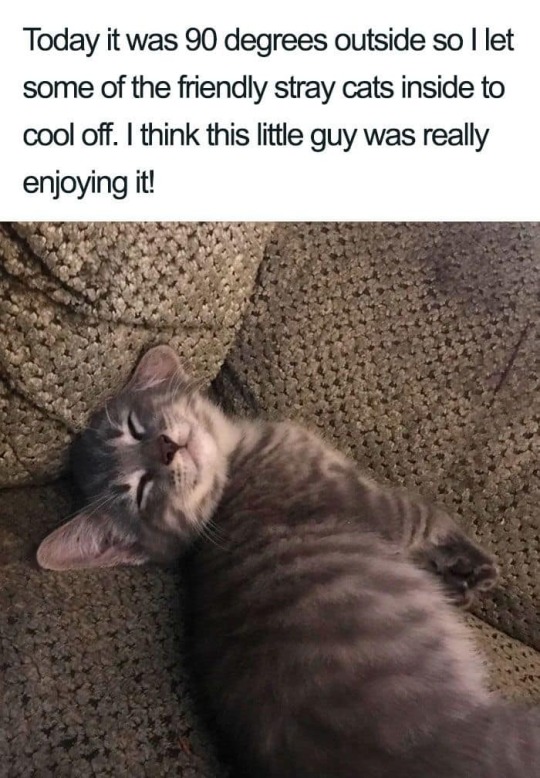Text
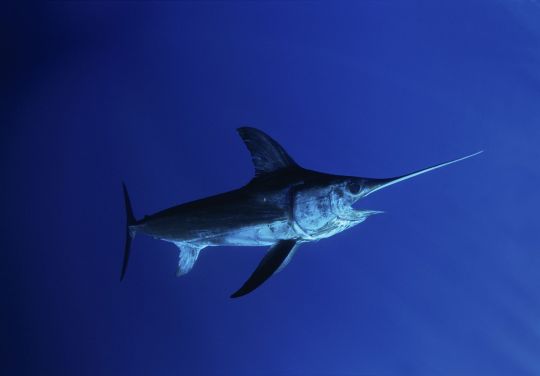


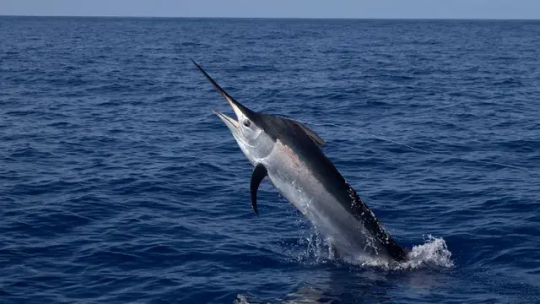
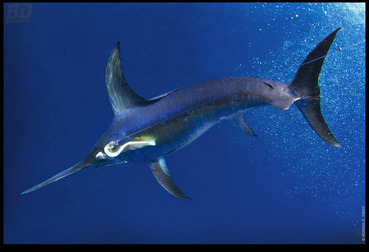
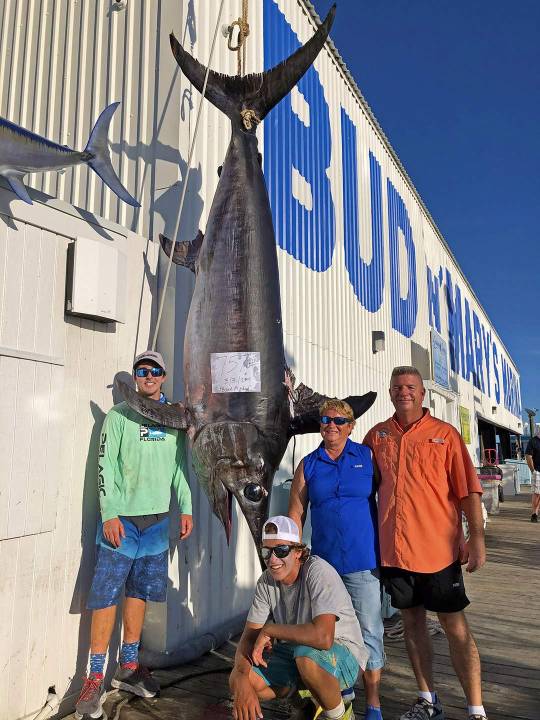


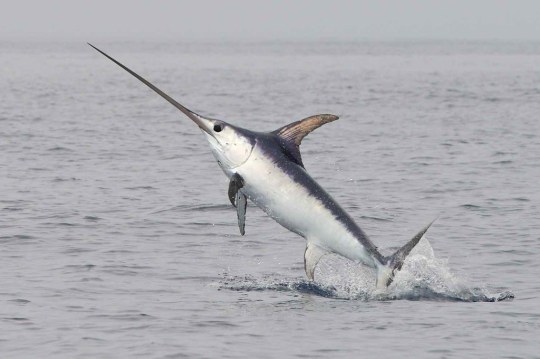
Happy Earth Day. Xiphias gladius, better known as the swordfish or the broadbill, is a species of large predatory fish, and the sole living member of there family Xiphiidae. These fish can be found throughout the atlantic, pacific, and Indian oceans from the surface to depths up to 9,442ft (2,878m). This highly migratory species typically moves towards colder regions during the summer and warmer regions during the winter, feeding upon a wide range of pelagic fish, cephalopods, and crustaceans. Swordfish are not a schooling fish and often travel alone or in loose congregations, they may cruise at some 22mph (36km/h) and rely on there speed to catch prey, reaching up to 60mph (100km/h) in short bursts. Contrary to popular legend they do not stab there prey but rather slash at it with there sword. Swordfish are themselves occasionally preyed upon by killer whales, pilot whales, shortfin mako sharks, and possibly giant squid. Reaching around 10 to 15ft (3 to 4.55m) in length and 500 to 1,500lbs (230 to 680kgs) in weight, with female swordfish are slightly larger than males, they sport elongated and rounded bodies with tall fins and a distinctive sword like bill. Swordfish first hatch with scales and teeth but end up loosing both by adulthood. The breeding season varies according to the location, typically occurring in spring and summer in temperate zones and year round in tropical climates. During spawning a single female swordfish may lay 1 to 29 million eggs. Under ideal conditions a sword fish may reach sexual maturity at 4 to 5 years of age and live up to 16.
#pleistocene pride#pleistocene#pliestocene pride#pliestocene#cenozoic#fish#swordfish#ocean#marine life#deep sea#animal#animals
5 notes
·
View notes
Text
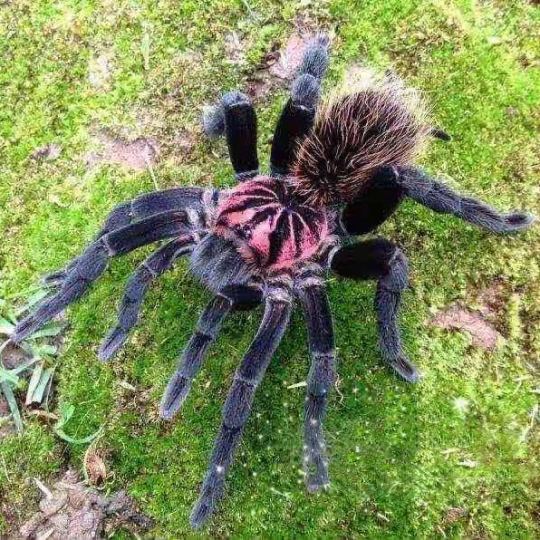
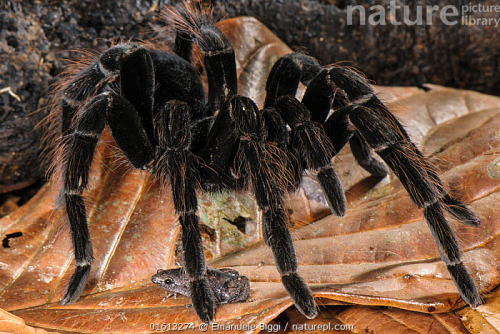

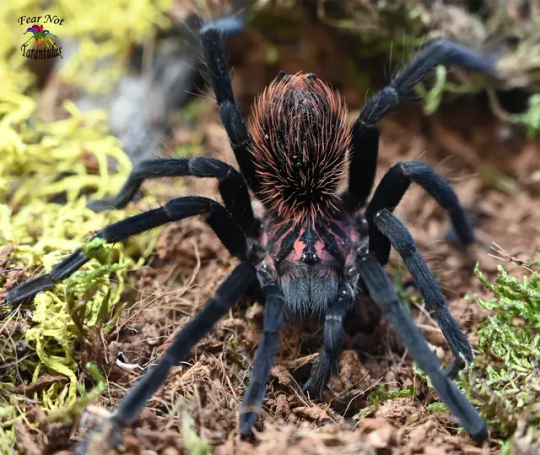
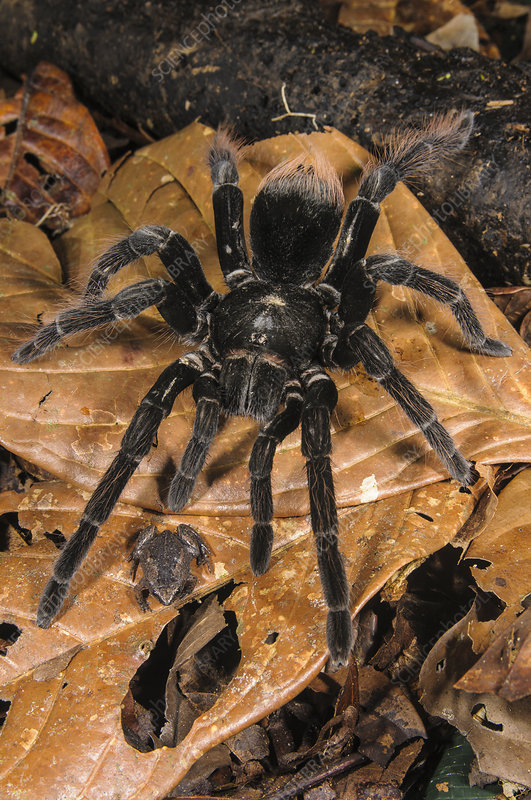
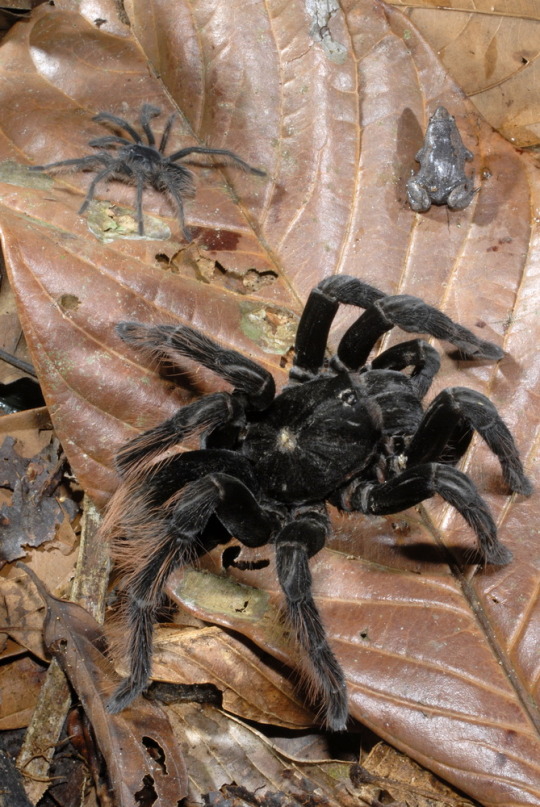
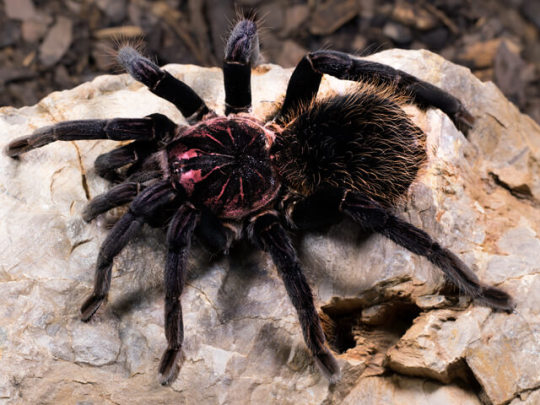

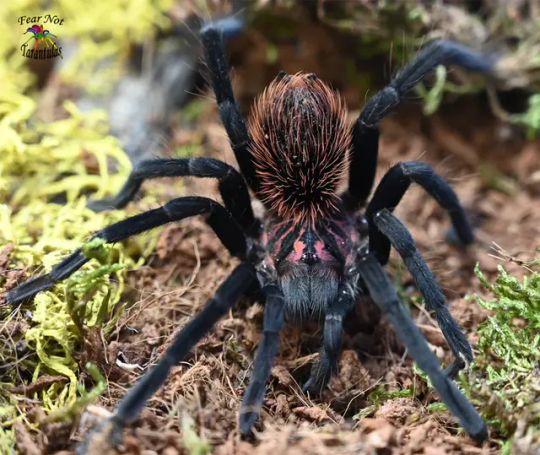


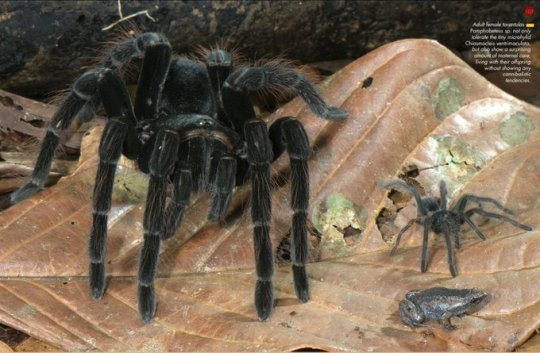


Xenesthis immanis, better known as the Colombian lesser black tarantula, is a species of terrestrial bird spider endemic to the lowland rainforests, marshes, swamps, and cloud forests of Colombia, Venezuela, and Peru. Like many tarantulas these spiders will dig fairly spacious burrows which they may line with silk to stabilize the walls and improve structural integrity. Here they spend most of the day venturing out at night in search of prey: typically crickets, cockroaches, beetles, centipedes, millipedes, and other spiders as well as the occasional rodent, bat, lizard, snake, or small bird. They dispatch said prey using powerful chelicerae tipped with long chitinous fangs that can inject a mild venom. As previously mentioned the Colombian lesser black tarantula has a symbiotic relationship with the dotting humming frog. The two species frequently live together, with the tarantula sharing its food with the amphibian and protecting it from predators, whilst the frogs care for the tarantulas eggs and protect the spider and its burrow from various pests. Colombian lesser black tarantulas are also known to sport a similar relationship with the Bolivian Bleating Frog: Hamptophryne boliviana. In some cases a tarantula may share its burrow with both amphibian species. Reaching some 7 to 9 inches (17.78 to 22.86cms) in length, they are a relatively large species of spiders. Females sport a dark purple colored carapace with long black velvet legs and an abdomen is covered in long blondish setae hairs. Whilst males are smaller with a brighter purple colored carapace and legs and more redish setae hairs on the abdomen. They are equipped with urticating hairs on their abdomens which they can rub off into the air to deter would be predators. These bristles can be quite irritating especially if they get it the nose, mouth, or eyes. Mating typically occurs once a year, during which time a male will seek out a female. When they meet he will perform a series of signals to lull the female into a calm and aroused state, once she is receptive he will mate as quickly as possible and then flee. Unlike many other species of spiders Colombian lesser black tarantulas rarely eat there mate. After mating a female Colombian lesser black tarantula will lay 50 to 100 eggs in a silken egg sac which will hatch in six to eight weeks. The young spiderlings remain in the burrow for some time after hatching being guarded and cared for by there mother and her associated frogs. Under ideal conditions a Colombian lesser black tarantula may live up to 15 years.
#pleistocene pride#pliestocene pride#pleistocene#pliestocene#cenozoic#spider#bug#frog#colombian lesser black tarantula#dotted humming frog#tarantula
2 notes
·
View notes
Text


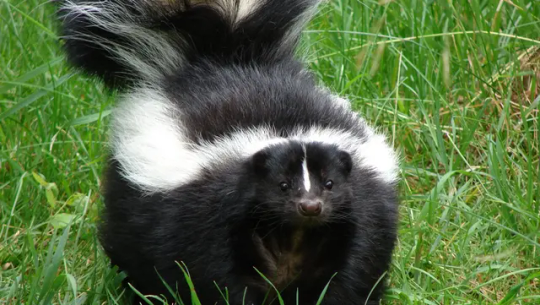

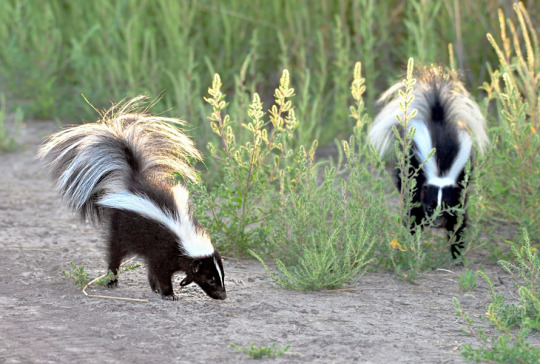
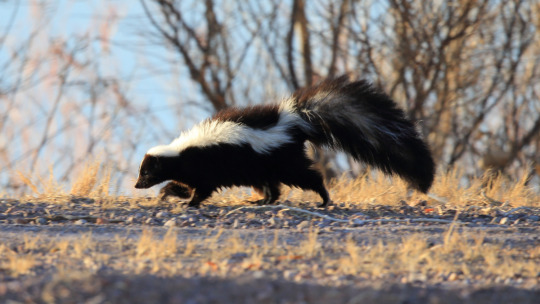



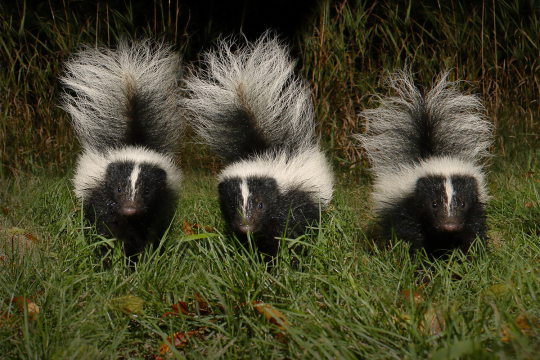

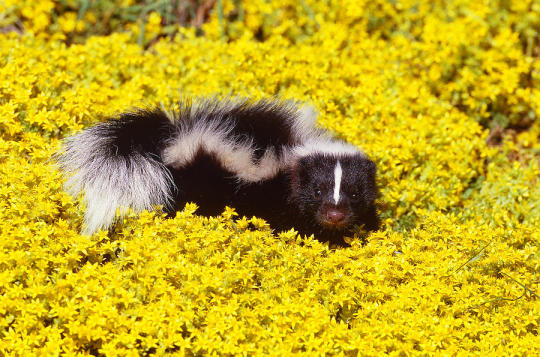

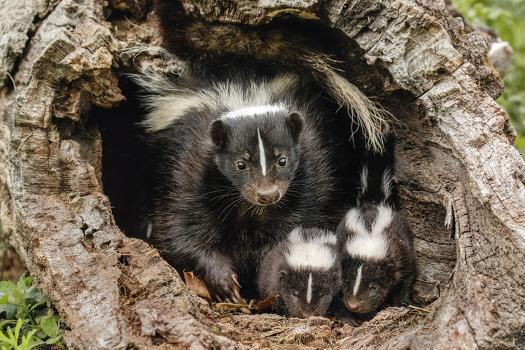
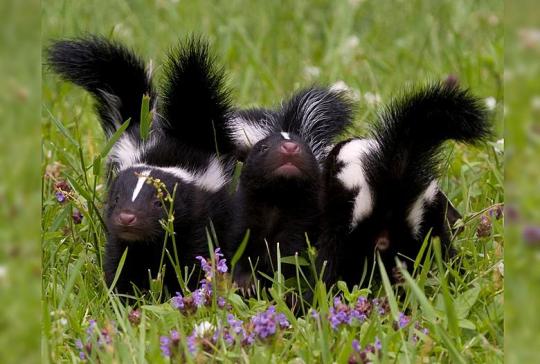
Mephitis mephitis better known as the striped skunk, seganku, scangaresse, sheegawk, common skunk, Alaska sable, mahcah, guli, Hudsonian skunk, nool'-tsee-a, northern skunk, black-tailed skunk, and prairie polecat, is a species of skunk which is endemic to the United States, southern Canada, and northern mexico. Striped skunks are found in a variety of habitats including grasslands, scrublands, deserts, montane areas, riverine woodlands, forests, and agriculture lands. For the most part they nocturnal lead solitary lives but will come together to socialize, particularly during the breeding season, and in winter multiple skunks may share a den to hibernate. They are largely insectivores feeding upon grasshoppers, beetles, crickets, caterpillars, worms, arachnids, grubs, centipedes, millipedes, and bees, but are also known to eat crayfish, crabs, fish, amphibians, small reptiles, carrion, apples, berries, cherries, corn, nightshade, young rabbits, white-footed mice, voles, eggs, and bird chicks. Like all skunks, they possess a pair of highly developed musk-filled scent glands which can spray a noxious liquid, known for its irritating foul stench, considerable distances. Because of this formidable defensive capability, the striped skunk has few natural predators, however they are known to occasionally be eaten by particularly hungery or determined coyotes, bobcats, wolverines, badgers, foxes, cougars, golden eagles, bald eagles, and great horned owls. Reaching around 18 to 32 inches (46.5 to 81.5cms) in length and 1.5 to 13lbs (.7 to 6.3kgs) in weight, striped skunks are a stoutly-built, short-limbed animal with a small, conical head and a long, heavily furred tail. The feet are plantigrade with bare soles, with the forefeet having five long, curved claws adapted for digging, while those on the hind feet are shorter and straighter. The color patterns of the fur vary greatly, but generally consist of a black base with a white stripe extending from the head which divides along the shoulders, continuing along the flanks to the rump and tail. Some specimens have a white patch on the chest, while others bear white stripes on the outer surface of the front limbs. Brown and cream colored individuals are also known to occur. The striped skunk is polygamous with the breeding season occurring from mid February to mid april. During this time a striped skunks genitals will grow considerably in size with males testicles swelling up to 4 times there usual size. They typically form harems with one male breeding with several females. After a 59 to 77 day pregnancy mothers will give birth to 2 to 18 kits, which open there eyes at around 3 weeks of age, are weaned by 6 to 7 weeks, and set off on there own at around 2.5 to 3 months old. Under ideal conditions a striped skunk may reach sexual maturity at 10 months old and live up to 10 years.
#pleistocene pride#pleistocene#pliestocene pride#pliestocene#cenozoic#ice age#stone age#skunk#striped skunk
3 notes
·
View notes
Text

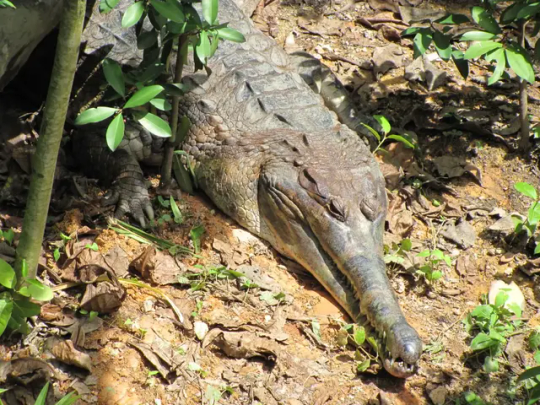




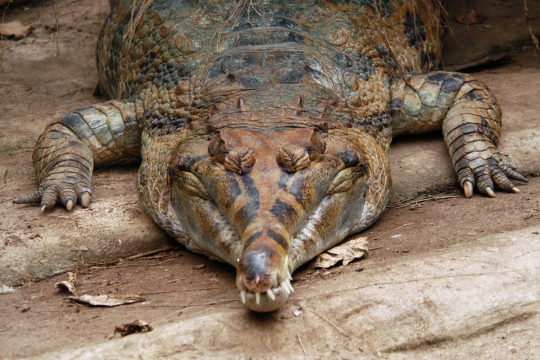
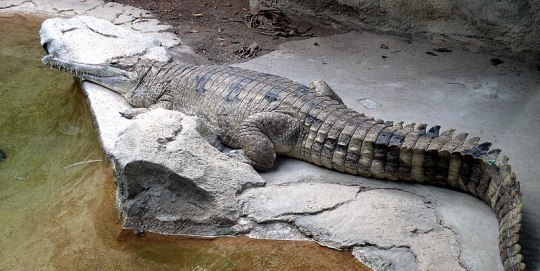
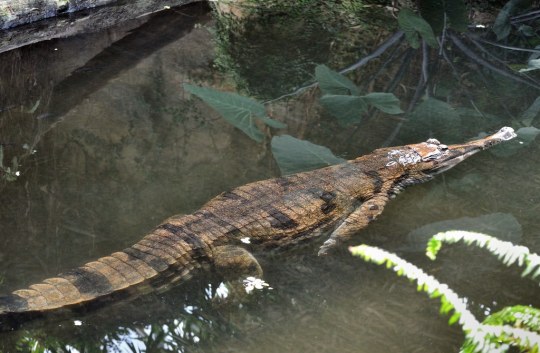
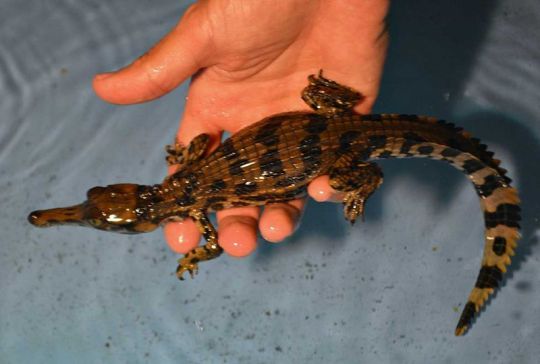
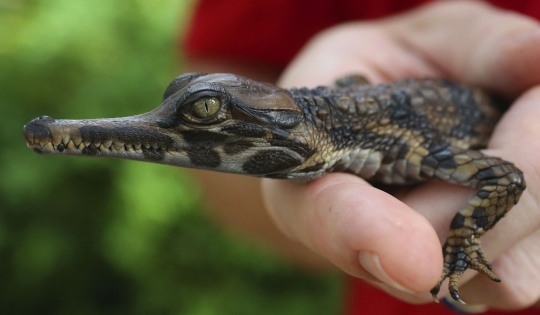
Tomistoma schlegelii, better known as the false gharial, Malayan gharial, Sunda gharial, or tomistoma is a species of large primarily freshwater crocodilian native to Malaysia, Sarawak, Indonesia, Borneo, Sumatra and Java. Despite its common name of false gharial the tomistoma is a member of the family Gavialidae, of which the tomistoma and the Indian gharial are the only two living members, meaning that the false gharial is very much a true gharial. Tomistoma tend to inhabit rivers, lakes, and swamps, where they feed upon fish, crustaceans, amphibians, monkeys, deer, water birds, otters, various reptiles, wild dogs, pigs, and even the rare cow. Tomistoma are themselves occasionally preyed upon by large crocodiles, tigers, leopards, and packs of wild dogs. Female tomistoma reach around 10 to 13ft (3.05 to 4m) in length and 205 to 460lbs (93 to 210kgs) in weight while males reach around 12 to 16ft (3.6 to 5m) in length and 420 to 1,300lbs (190 to 600kgs) in weight. They sport the largest skull in comparison to body length of any extant crocodilian, in large part do to there long, thin, smooth, and unordamented snout. Tomistoma are typically a dark reddish-brown coloration above with dark brown or black spots and cross-bands on the back and tail. With a grayish white mottled underbelly. Juveniles are mottled with black on the sides of the jaws, body, and tail. Breeding occurs twice a year in accordance with the wet seasons, from November to February and from April to June. After breeding females will build a nesting mound out of sand, peat, moss, twigs, and leaves typically near the water in the shade of a large tree. Here she will lay 20 to 60 eggs which will incubate for 90 to 100 days. Although mother tomistoma may sit on or near there mounds and guard them, unlike other crocodilians they offer no parental care once the young have hatched. Under ideal conditions a tomistoma will reach sexual maturity at around 20 years of age and may live up to 80.
#pleistocene pride#pleistocene#pliestocene pride#pliestocene#cenozoic#ice age#stone age#crocodilian#false gharial#gharial#tomistoma#malayan gharial#sunda gharial
1 note
·
View note
Text

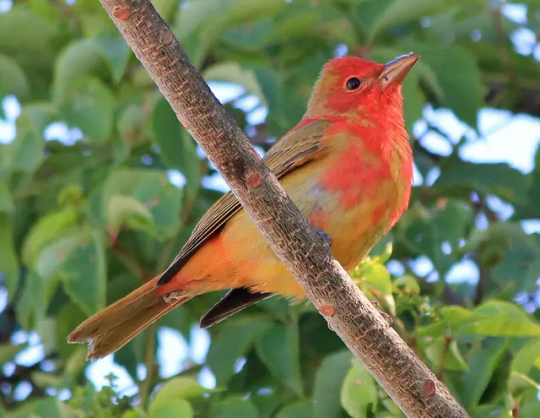
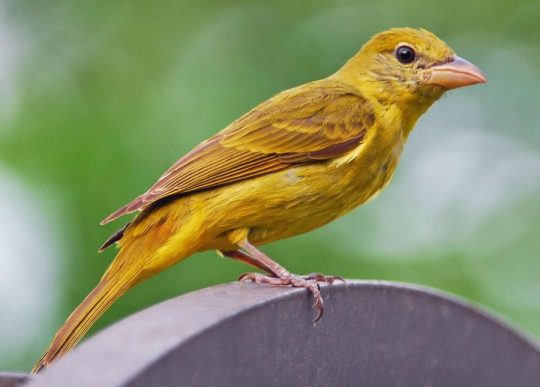


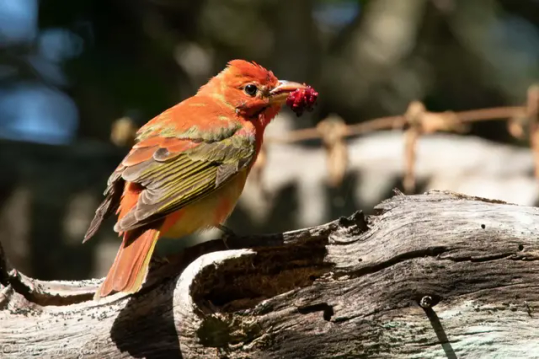
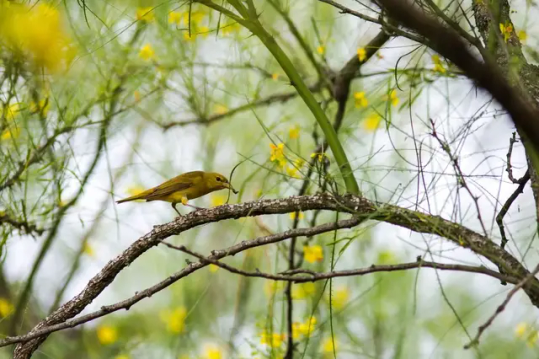

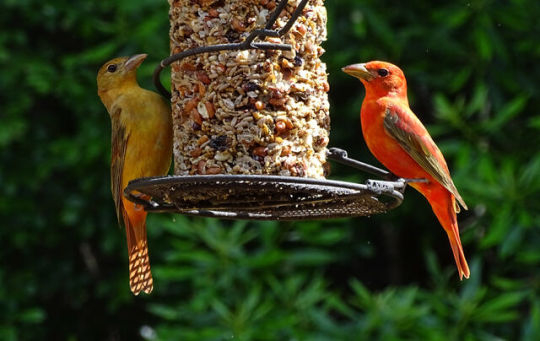



Piranga rubra, better known as the Summer Tanager, is a species of song bird in the cardinal family Cardinalidae which is native to North, Central, and South America. They live in a variety of habitats depending on there range including montane, temperate, an tropical forests as well as dry and riverine woodlands. They feed upon insects (particularly bees and wasps), arachnids, slugs, snails, fruits, and the occasional small vertebrate such as lizards. They are typically solitary animals but are known to form pairs in the mating season and flocks with up to 30 individuals, including mixed species flocks, during migration. There are 2 subspecies: P. r. cooperi which breeds in southwest USA and north Mexico and winters in south Mexico, and P. r. rubra which breeds in the eastern USA and winters in Central and North South America. Reaching around 6.7 to 8 inches (17 to 20cms) in length, 0.9–1.2 oz (25.5 to 34grams) in weight, with an 11 to 12in (28 to 31cms) wingspan, the summer tanager is a medium sized songbird. Males are bright rose or orange-red throughout the year whilst females are olive colored above with a rich yellow or orange underside. They breed during the summer forming pairs which monogamously bond for the season. They construct a bowl shaped nest out of leaves, vines, stems, and grasses amongst a horizontal branch of a tree some 8 to 34ft (2.5 to 10.5m) above the ground. Here the female lays 3-4 pale blueish green eggs with reddish brown spots. They are incubated by there mother for 12 to 13 days straight, whilst there father feeds and protects said mother. After hatching the chicks are cared for by both parents. The young fledge after 8 to 10 days, but remain with there parents for an addition 2 to 4 weeks. Under ideal conditions a summer tanager may reach sexual maturity at a year of age and may live up to 11 years.
#pleistocene pride#pleistocene#pliestocene pride#pliestocene#ice age#cenozoic#stone age#dinosaur#bird#summer tanager#tanager
7 notes
·
View notes
Text

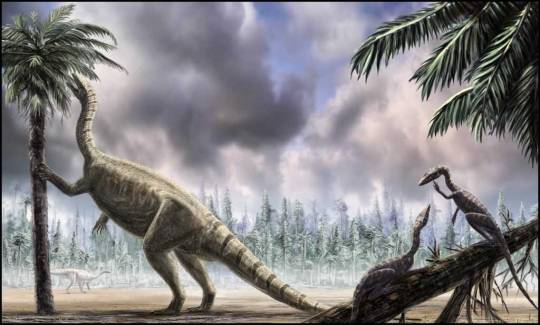
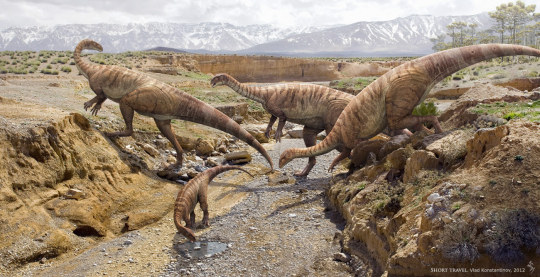
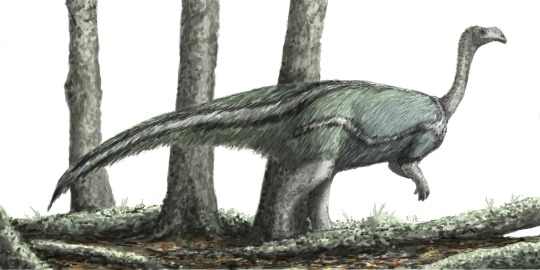
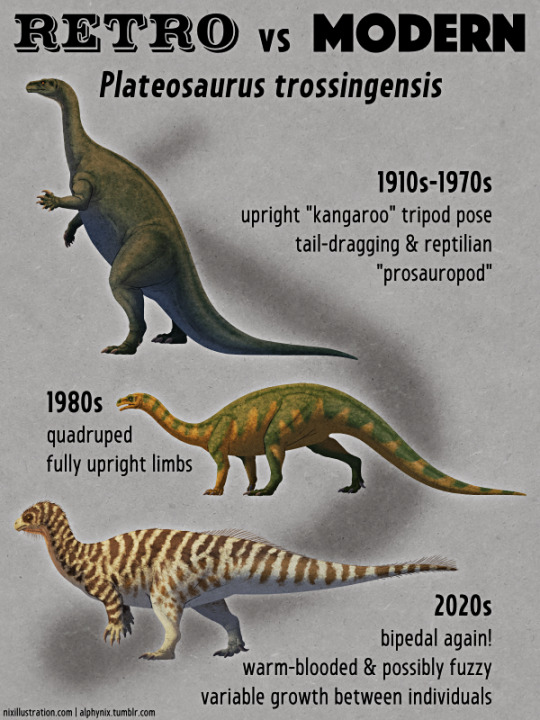
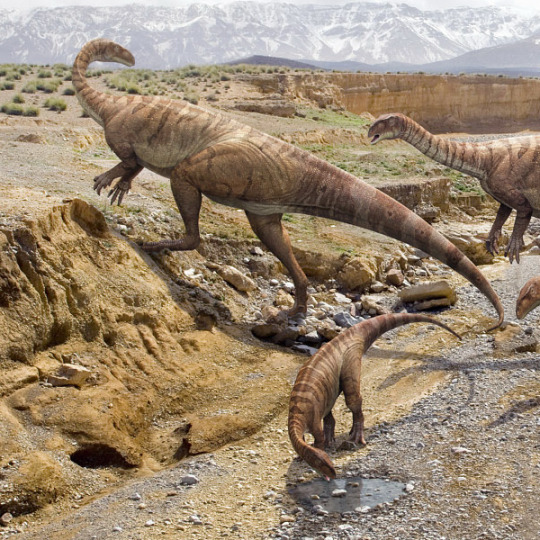




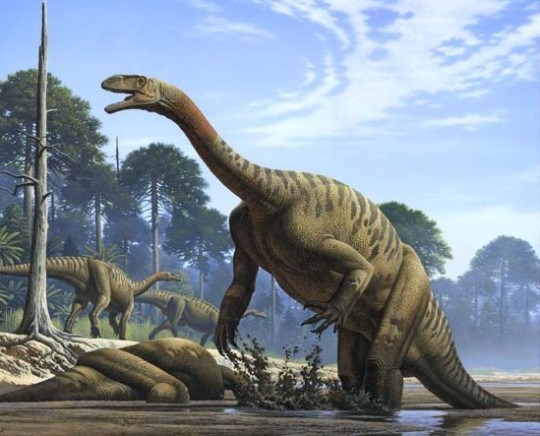
Plateosaurus is a genus of basal early sauropodomorph dinosaur aka a prosauropod, which lived throughout what is now Europe and possibly Greenland from the Norian to the Rhaetian of the late triassic some 214 to 204 million years ago. The first remains now known to belong to Plateosaurus consisted of parts of the legs and some vertebrae were unearthed in 1834 by physician Johann Friedrich Engelhardt at Heroldsberg near Nuremberg, Germany. He then showed them to palaeontologist Hermann von Meyer, who in 1837 designated them as Plateosaurus meaning broad lizard. This means that Plateosaurus is the fifth named dinosaur genus that is still considered valid. Since then the remains of well over 100 individuals have been recovered throughout Switzerland, France, Norway, and especially the German region of Swabia causing German palaeontologist Friedrich August von Quenstedt to nickname the animal Schwäbischer Lindwurm meaning the Swabian Dragon. Material referred to Plateosaurus has also been found in the Fleming Fjord Formation of East Greenland, however much of these remains have now been assigned to its own distinct genus of prosauropod called Issi. Although there remains some indeterminate material from the local still assigned to plateosaurs. Today 3 species are considered valid: P. trossingensis, P. longiceps, and P. gracilis. Unusual amongst dinosaurs, plateosaurs had a high amount in developmental plasticity with adult specimens reaching anywhere from 66 to 33ft (4.8 to 10m) in length and 1,300 to 8,800lbs (600 to 4,000kgs) in weight. Despite the great quantity and quality of fossils, Plateosaurs was for a long time a source of confusion and misunderstanding. Leading to there being considerable debate in regards animal's biology, taxonomic position, physical posture and behavior over the years. The modern understanding of these animals is that they were large obligate bipeds which sported small heads, long and flexible necks, sharp but plump plant-crushing teeth, powerful hind limbs, short but muscular arms and grasping hands with large claws on three fingers which were used for both defense and feeding. Plateosaurus likely lived in loose herds and feed upon a wide variety of vegetation, acting as the primary large herbivore of its environments, occasionally supplementing its diet with carrion, insects, or small vertebrates.
Art used above can be found at the links below
https://nixillustration.com/science-illustration/2022/retro-vs-modern-10-plateosaurus/
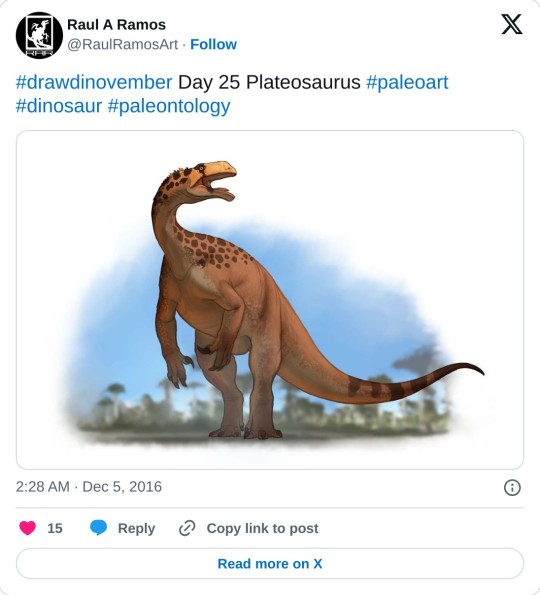
#pleistocene pride#pliestocene pride#mesozoic#dinosaur#dinosaurs#sauropod#prosauropod#sauropodomorpha#plateosaurs#dragon#triassic
5 notes
·
View notes
Text
Nothosaurus
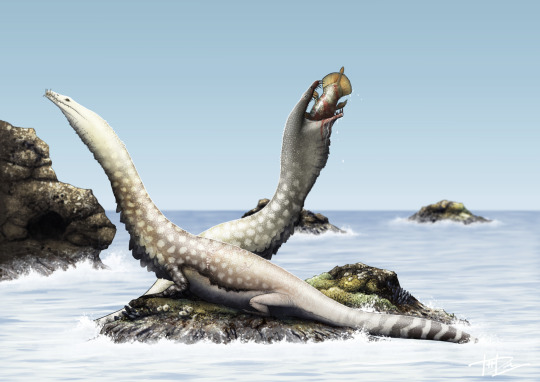
By Tas Dixon
Etymology: False Reptile
First Described By: Münster, 1834
Classification: Biota, Archaea, Proteoarchaeota, Asgardarchaeota, Eukaryota, Neokaryota, Scotokaryota, Opimoda, Podiata, Amorphea, Obazoa, Opisthokonta, Holozoa, Filozoa, Choanozoa, Animalia, Eumetazoa, Parahoxozoa, Bilateria, Nephrozoa, Deuterostomia, Chordata, Olfactores, Vertebrata, Craniata, Gnathostomata, Eugnathostomata, Osteichthyes, Sarcopterygii, Rhipidistia, Tetrapodomorpha, Eotetrapodiformes, Elpistostegalia, Stegocephalia, Tetrapoda, Reptiliomorpha, Amniota, Sauropsida, Eureptilia, Romeriida, Diapsida, Neodiapsida, Sauria, Archosauromorpha?, Archelosauria, Pantestudines, Sauropterygia, Eosauropterygia, Nothosauria, Nothosauridae, Nothosaurinae
Referred Species: N. mirabilis, N. cristatus, N. cymatosauroides, N. edingerae, N. giganteus, N. haasi, N. jagisteus, N. marchicus, N. mirabilis, N. tchernovi, N. yangjuanensis, N. zhangi
Time and Place: From 242 million years ago until 208 million years ago, from the Ladinian of the Middle Triassic through the earliest Rhaetian of the Late Triassic
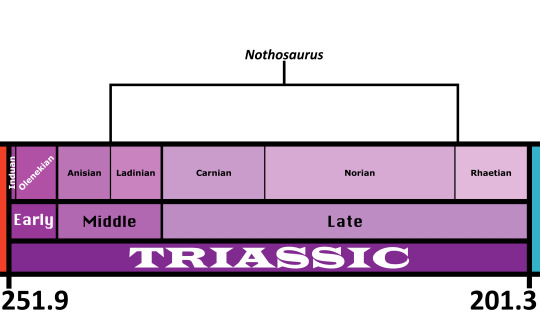
Nothosaurus is known from all over Eurasia and North Africa, to the point that it’s pointless to list all the locations. Just assume that if it’s the Mid or Late Triassic of the Tethys Sea, Nothosaurus is there.

Physical Description: Nothosaurus is an iconic Triassic marine reptile - to the point that we had to include it, or else we would have violated some sort of rule of paleontology. Nothosaurus was about 4 meters long on average, but could reach up to 7 meters in length. It had a long, streamlined body, with a long neck and a long tail. Its head was narrow and filled with long and pointed teeth which interlocked together when the mouth closed, forming a tight trap. Its forelimbs were longer than its hind limbs, and all of its hands and feet had webbing between the long toes. In a lot of ways, it looked extremely similar to later marine reptiles to which it was closely related, like the Plesiosaurs and Pliosaurs, just with hands instead of proper flippers - however, current evidence indicates that the Plesiosaurs and Pliosaurs evolved from an ancestor of both groups, and Nothosaurus is just a Triassic offshoot. It had capabilities for diving in the water, though it also was still adapted for life on the shore.
Diet: Nothosaurus primarily ate fish and other marine animals, including other marine reptiles.
Behavior: Nothosaurus was semi-aquatic, spending a lot of its time both in the ocean and on land. On the beaches and shores it would rest and sleep, and then turn to the ocean for most of its everyday life. Diving for food would have been most of its daily activities, going after juvenile reptiles and large fish in the water and diving in order to reach it. It probably would have paddled with its webbed feet, and undulated its body to some extent to help propel forward. It may have been at least somewhat social, living in groups and colonizing the shores together before going for group dives for food. Interestingly enough, Nothosaurus was basically like a reptilian seal, coming up to shore to rest and sit with its relatives. Whether or not they would have given birth to live young is uncertain; while their close relatives, the Plesiosaurs, did; they retained enough land adaptations to allow them to lay eggs on the shore. More research as to their physiology is needed in order to determine that aspect of their life history. Trackways have been attributed to Nothosaurus, which may show that they rowed their paddles on the sea bed to shake up small animals trapped underneath; this would have allowed Nothosaurus to capture the invertebrates between its long teeth and hold onto them so they could not escape.
Ecosystem: Nothosaurus lived throughout the early Tethys sea, and was a common feature in many communities throughout this growing body of water during the Middle and Late Triassic. It would have stuck to the coasts for the most part, but still ventured out into deep and open water. As such, it’s rather difficult to list all the different animals it lived alongside - it’s found in Bulgaria, China, France, Germany, Hungary, Israel, Italy, Jordan, the Netherlands, Poland, Saudi Arabia, Spain, and Switzerland. So just, assume that a marine creature from the Tethys during this time lived with Nothosaurus rather than not.
Other: Nothosaurus has been treated as, unfortunately, a wastebasket taxon - it was discovered early enough in the history of paleontology as a science that many similar animals were just dumped into this name without any specific studies done. So, determining the factual relationships from this mess is still being worked out; in fact, it seems that this genus is paraphyletic, with many close relatives of Nothosaurus being more closely related to some species than to others. So that’s fun!
Species Differences: The varying species of Nothosaurus tend to differ based on where and when they lived, rather than any particularly notable differences. There are some differences in size and limb proportions as well, but in general the differing species of Nothosaurus would have had very similar ecological roles.
~ By Meig Dickson
Sources Under the Cut
Keep reading
302 notes
·
View notes
Link
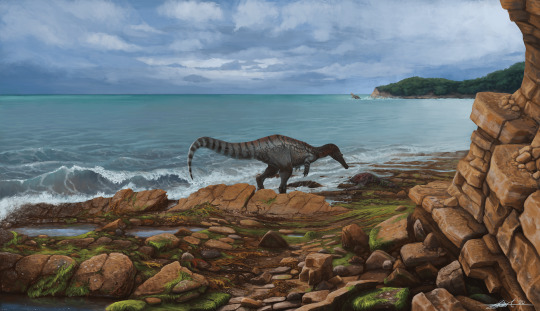
Spent the last 3 days doing a cheeky lil painting for you lot! It’s a Baryonyx taking a morning walk by the sea. This one’s definitely my best full scene as of yet, so I hope you all enjoy! (Link directs to a higher-res version on Deviantart <3)
840 notes
·
View notes
Text
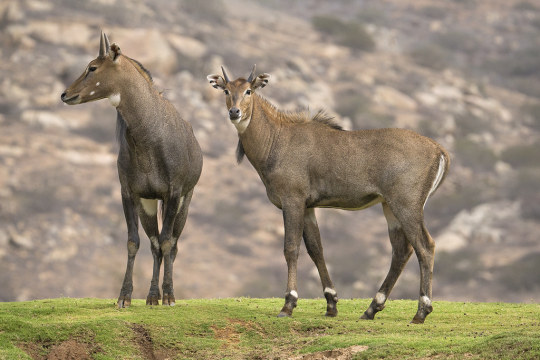

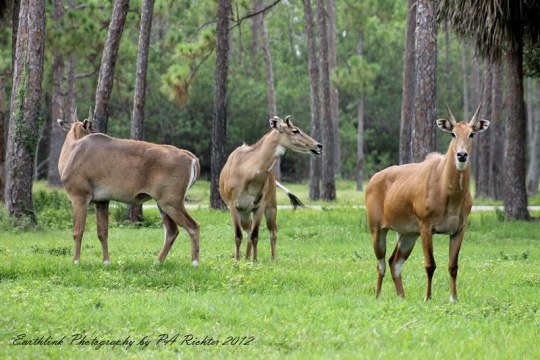


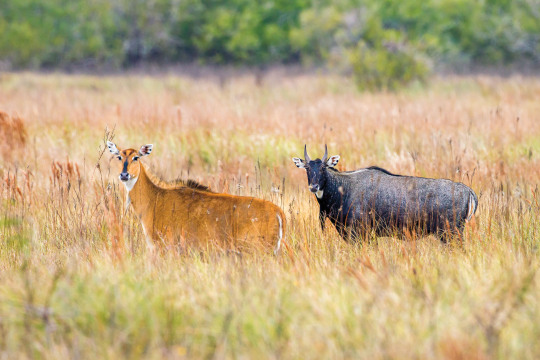
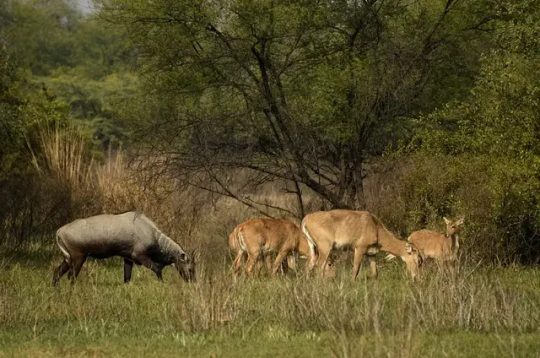
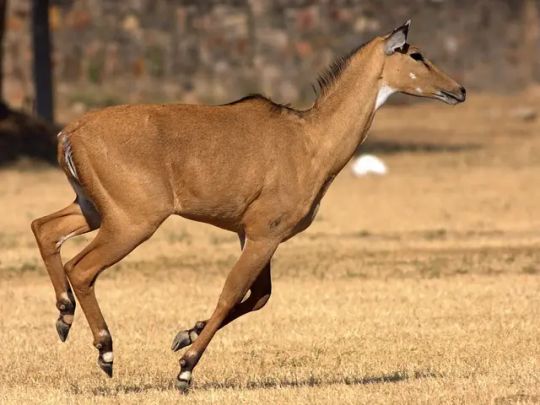

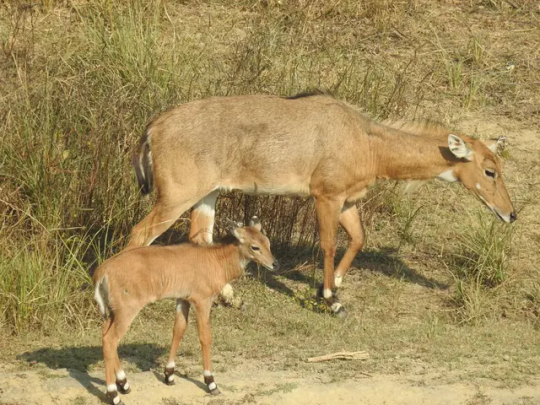


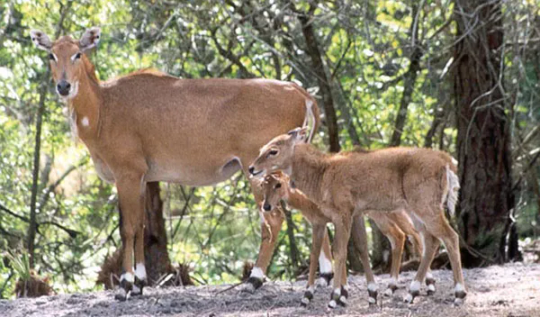

Boselaphus tragocamelus bette known as the nilgai, blue bull, or white-footed antelope, is a species of antelope endemic to the grasslands, scrublands, dry forests, and agricultural lands of India, Pakistan, and Nepal. Additionally they were introduced to the US state of Texas by big game hunters in the 1930s and have since become a feral and invasive species throughout Texas, Alabama, Florida and Mississippi and the Mexican state of Tamaulipas. They are diurnal and moderately social animals typically living in groups of less than 10 individuals, tho congregations of up to 70 are not unheard of, particularly during the breeding season. Three distinct types of herds are formed: females with young calves, adult and juvenile females, and all males. Nilgai are mixed feeders, eating a variety of grasses, shrubs, leaves, seeds, flowers, fruit, herbs, vines, and woody plants. Nilgai don’t often drink water getting the majority of there moisture from there diet. Nilagai are preyed upon by wolves, striped hyenas, leopards, dholes, coyotes, mountain lions, Asiatic lions, alligators, crocodiles, and tigers. Reaching 3.3 to 5ft (1 to 1.5m) tall at the shoulder, 5.7 to 7ft (1.7 to 2.1m) in length, and 220 to 640lbs (100 to 290kgs) in weight, Nilgai are the largest antelope in asia. They are characterized by there sturdy bodies, thin-legs, sloping back, a deep neck with a white patch on the throat, a short crest of hair along the neck terminating in a tuft, a dewlap, and white facial spots. Sexual dimorphism is prominent with males being considerably larger than females, and while females and juveniles are orange to tawny, adult males have a bluish-grey coat. Additionally only males have horns. Mating may occur throughout the year, but peaks during the breeding season which is October to February in there native range and December to March in the USA and Mexico. During such time male and female herds join up with one another and males become aggressive and fight among themselves for dominance. After an 8 to 9 month pregnancy a mother nilgai will give birth to 1 to 3 calves. They young remain with there mothers before setting off to join a different herd at around 10 months, under ideal conditions a nilgai may live up to 21 years.
#pleistocene pride#pleistocene#pliestocene pride#pliestocene#cenozoic#ice age#stone age#mammal#antelope#nilgai#blue bull
1 note
·
View note
Text

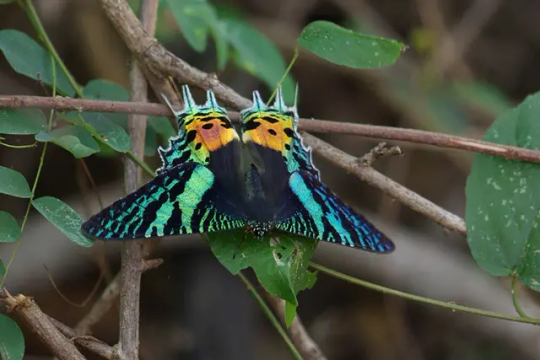
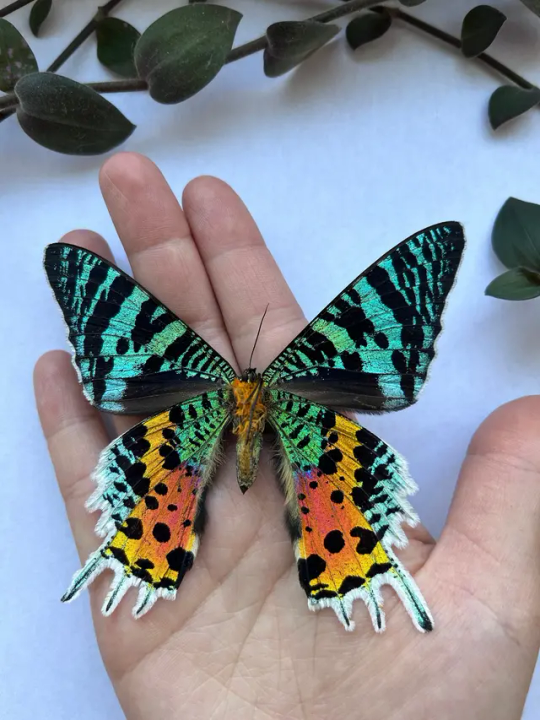






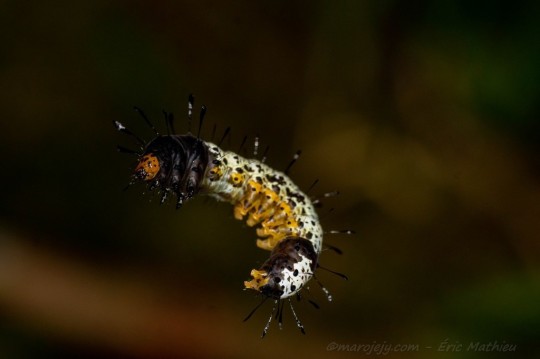
Chrysiridia rhipheus better known as the adriandolo, the lolonandriana, or the Madagascan sunset moth, is a species of moth of the family Uraniidae which is endemic to Madagascar. Here these sunset moths are found throughout the majority of the island with the exception of the southern deserts, with adults routinely migrating in the thousands between groves of there host plants: shrubs and trees in the genus Omphalea. Adult moths are also attracted to white and yellow flowers to feed on there nectar, particularly the flowers of the common mango, loquat, Sydney blue gum, Indian almond, Cussonia, and tea tree. Unlike most moths, the sunset moth is day flying utilizing the sunlight to showcase its bright aposematic colors to warn predators of its toxicity. At night they roost in large groups in the canopy some 300ft (100m) off the ground. With a wingspan reaching some 2.8 to 4.3 inches (7 to 11cms) in length, the sunset moth is black in coloration with iridescent red, blue and green markings. There is a fringe of white scales on the wing edges, wider on the hindwings with these wings sporting 6 distinct tails. Breeding occurs year round, with females laying some 60 to 110 eggs late in the afternoon or at nightfall on there host plants. After 3 to 4 days the eggs hatch and the larvae begin to feed upon the host plant. The caterpillars are whitish yellow with black spots and red feet and are covered in club-ended black setae. They are selective at first only eating parts of the leaves to avoid the plants toxic latex. But after 3 to 4 days of growth they begin to also eat the flowers, fruit, tendrils, petioles and young stems as they begin to incorporate the toxins into there body and create silk to deal with excess latex, said silk enable them to stick to and climb various surfaces. After spending 2 to 3 months as a caterpillar the larvae then spins a cocoon out of silk, where they will spend 17 to 23 days as a chrysalis before emerging as an adult.
#pleistocene pride#pleistocene#pliestocene pride#pliestocene#cenozoic#bug#moth#madagascar#madagascan sunset moth#animal#facts
2 notes
·
View notes
Text
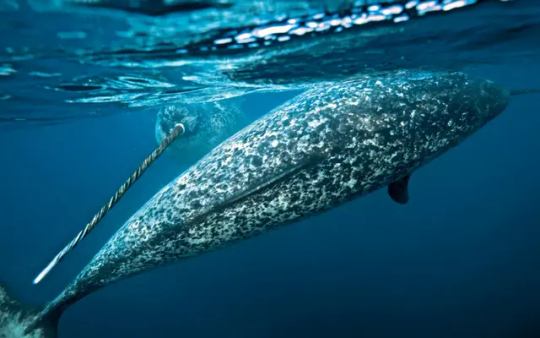
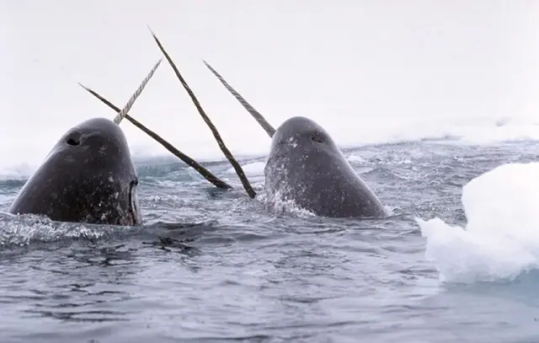

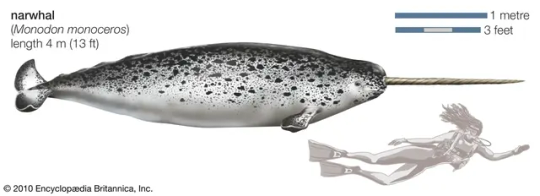


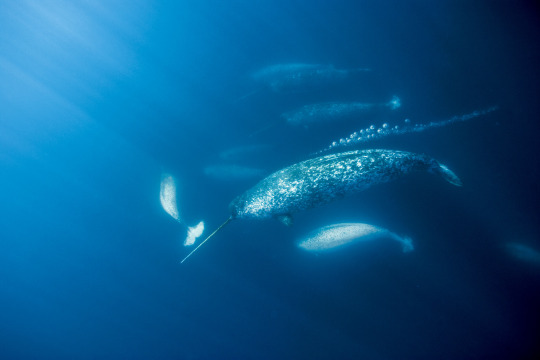


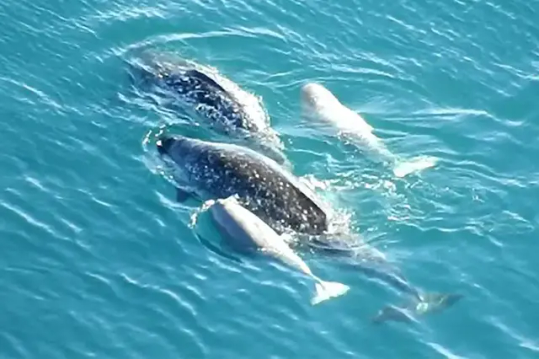
Monodon monoceros, better known as the narwhal, is a species of toothed whale in the family Monodontidae and the only living member of the genus monodon, and is endemic to the frigid waters of the far northern atlantic, the far northern pacific, and the arctic oceans. They live in pods of 5 to 20 individuals, with individuals frequently switching between groups depending on the time of year (in calving season nursery pods are formed of primarily females and there young, during such time adolescents join with bull males to form there own pods), in some cases several pods may come together for short periods of time forming aggregations up to 1,000 whales. Narwhals are some of the deepest swimming mammals, regularly diving upwards of 4,900ft (1,500ms) in search of prey such as cod, squid, redfish, wolffish, capelin, cuttlefish, shrimp, skates, and various types of flatfish. Narwhals are themselves preyed upon by polar bears, orcas, Greenland sharks, and humans. Reaching some 10 to 18ft (3 to 5.5ms) in body length, and 1,760 to 3,530lbs (800 to 1.600kgs) in weight, with males being slightly larger than females, narwhals sport a thick cylindrical body and a mottled pigmentation, with blackish-brown markings over a white background. Instead of a dorsal fin, it possesses a shallow dorsal ridge, and female narwhals sport tail flukes that sweep-back on the front edges, whilst those of males curve inwards. The narwhals most notable feature is the single long spiral tusk which projects from the left side of the upper jaw of males and can get up to 10ft (3m) long. Additionally some females may grow tusks and some males may grow two tusks. These tusks seem to have many uses such as: stunning fish, attracting mates, fencing with rivals, sensing temperature and salinity, breaking sea ice, and communication with one another. Breeding occurs from march to may, after a 15 month pregnancy a mother narwhal will give birth to a single calf which remains by there mothers side for 2 to 3 years. Under ideal conditions a narwhal will reach sexual maturity at 6 to 8 years of age and may live upwards of 80.
#pleistocene pride#pleistocene#pliestocene pride#pliestocene#cenozoic#ice age#stone age#narwhal#arctic#whale#beluga#animal#sea#facts
13 notes
·
View notes
Photo
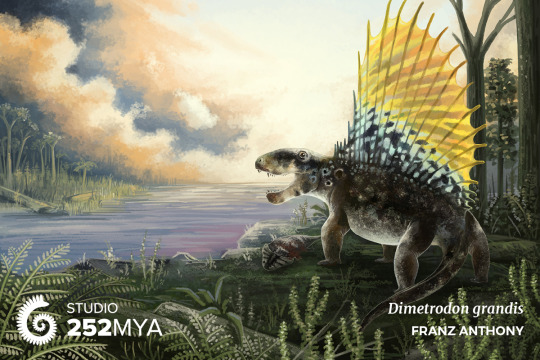
Dimetrodon grandis
Artwork by Franz Anthony / @franzanth
This sailed reptile-like animal is not a dinosaur, or not even a reptile. In fact, it’s a close cousin of mammals and lived over 40 million years before the first dinosaurs appeared.
—
252MYA creates custom-made artwork for private collections and editorial, scientific, or educational projects.
386 notes
·
View notes
Text




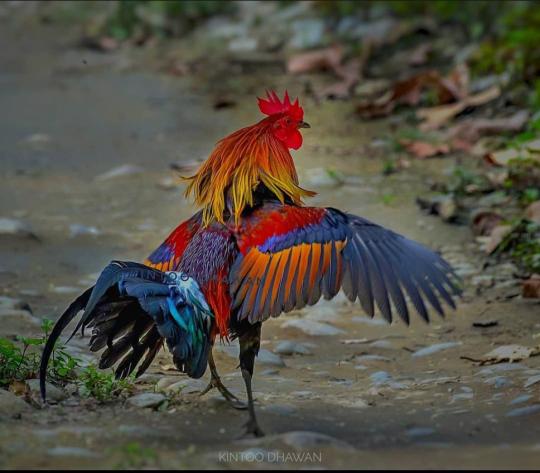
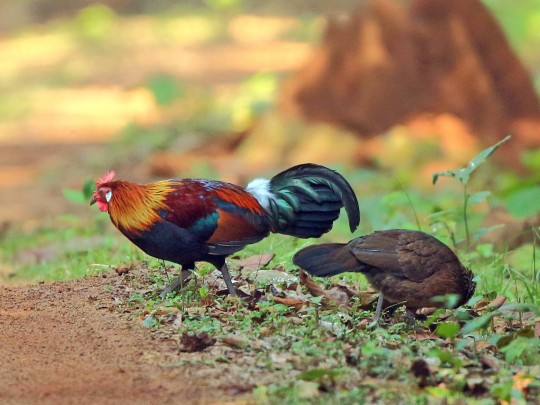


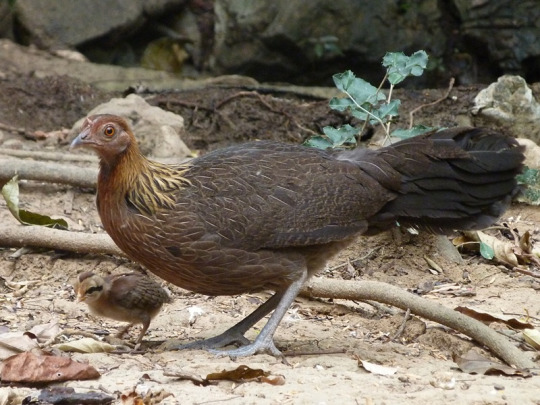

Gallus gallus better known as the red jungle fowl, the bankiva, the wild chicken, or the bankiva fowl, is a species of tropical bird in the family Phasianidae which is native throughout much of south east asia from India, Nepal and Bangladesh in the west, and eastwards across southern China, to Indochina; south/southeast into Malaysia, Singapore, the Philippines, and Indonesia. Red junglefowl are also the primary wild ancestor of the various breeds of domestic chickens, with humans first keeping and domesticating these birds some 8,0000 years ago. As such like its domestic descendants, was brought with and introduced to various regions across the world most notably Micronesia, Melanesia, Australia, and Polynesia. Here they inhabit all range of forests and woodlands as well as plantations, orchards, and agricultural areas. They live in flocks consisting of a few roosters and several hens and there offspring, often lead by a dominant male who maintains a small territory often centered around ideal roosting spots. They feed upon fruit, seeds, insects and other invertebrates, grains, leaves, stems, bamboo, grasses, roots, tubers, and the occasional small rodent or lizard. Jungle fowl are in turn eaten by a plethora or predators including various cats, civets, canines, primates, hyenas, lizards, snakes, crocodilians, coconut crabs, bears, marsupials, and predatory birds. Female red jungle fowl typically reach around 2.25lbs (1kg) in weight and 17 inches (43.2 cms) in length, while males can get to about 3.25 (1.5kg) in weight and 30 inches (76.2cms) in length. The males coloration is a vibrant mix of orange, brown, red, gold, grey, white, olive and even metallic green feathers. In contrast females are typically much more muted in plumage. Males also sport a long tall and larger combs and wattles than females. Flight in these birds is almost purely confined to reaching their roosting areas at sunset in trees or any other high and relatively safe places free from ground predators, and for escape from immediate danger through the day. Breeding occurs in the dry season, during which time males impress females by performing a display called "tidbitting" in which they dance, call, bobble, and brings the female food. After mating the female will lay an egg a day, for up to 12 days, and incubate them for 21 days until hatching. The young fledge at around 5 weeks of age, and at 12 weeks they are forced out of there mothers flock and must set off to join another or form there own. Under ideal conditions a red jungle fowl will reach sexual maturity at around 5 months of age and may live up to 30 years.
#pleistocene pride#pleistocene#pliestocene pride#pliestocene#cenozoic#ice age#stone age#dinosaur#bird#red#jungle#fowl#red junglefowl#junglefowl#chicken#asia#polynesian
7 notes
·
View notes
Photo
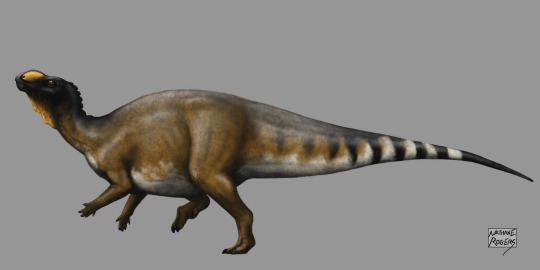
Muttaburrasaurus langdoni
Australia, Early Cretaceous Period
I was thrilled to see my illustration of this large ornithopod featured alongside work by some of the leading paleoartists from around the globe in a new article on the dinosaurs of Australia!
Check out the other images and learn more about Australia’s fascinating Mesozoic megafauna, including Muttaburrasaurus, a newly-found and as-yet-unidentified spinosaurid, Leaellynasaura, Australovenator, and Diamantinasaurus, over at Earth Archives:
http://www.eartharchives.org/articles/dinosaurs-down-under/
84 notes
·
View notes
Photo

Amphibian August #18 – Koolasuchus
Temnospondyls were hard-hit by the extinction event at the end of the Triassic, with only a few making it through to the Jurassic. They continued to decline, and eventually only one group persisted into the start of Cretaceous – the giant salamander-like brachyopoids. If modern amphibians aren’t in fact the living descendants of temnospondyls, then these ones were the very last of their kind.
Koolasuchus lived during the Early Cretaceous of southeast Australia (~120 mya), and was the latest-surviving known member of the group. Only fragmentary fossils have been found, but it may have grown up to a maximum estimate of 5m long (16′4″).

At the time, Australia was still connected to Antarctica and was located partly within the Antarctic Circle. While the climate there wasn’t as cold as it is today, it was still relatively cool for the Mesozoic. Notably, crocodiles were completely absent from the area due to these lower temperatures, leaving the large aquatic predator niche open for Koolasuchus to occupy.
Within the next 10 million years, however, temperatures warmed and crocodiles moved in, quickly out-competing Koolasuchus and leading to its extinction.
189 notes
·
View notes

